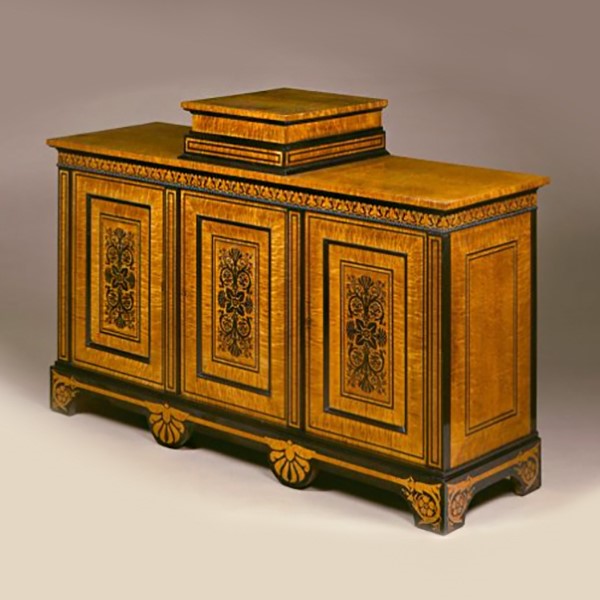The cabinet is one of a pair, the other is in the V&A and contra partie to this example which belonged to the Naylor-Leyland family at Haggerston and was used for their collection of ‘Birds Eggs’.
Materials and Techniques
Maple and ebony veneer; carcase of mahogany, pine and oak.
This cabinet is in the Greek Revival style and one of a number of surviving examples of this form. The moulded top and heavy plinth are typical of furniture by George Bullock (born 1782 or 1783, died 1818). Inside, the cabinet is fitted with shallow drawers, intended for coins, medals or natural history specimens. The central raised section on the top was designed for a piece of sculpture or other decorative object.
Materials & Making
Exotic woods such as maple and ebony were fashionable in the Regency period, but it is unusual to find them combined in this way. The contrast of dark inlay against a lighter ground is typical of Bullock’s strikingly individual style. One of his innovations was the use of flat pattern, particularly inlay and marquetry, instead of the three-dimensional gilt-bronze or giltwood mounts favoured by his contemporaries. He repeated the marquetry patterns for the doors on other cabinets, including an elaborate larch and ebony version in the Fitzwilliam Museum, Cambridge.
Design & Designing
The design for the marquetry is among a collection of tracings that were originally bound in a scrapbook inscribed Tracings by Thomas Wilkinson from the designs of the late Mr George Bullock 1820, which is now at Birmingham Museum and Art Gallery. Thomas Wilkinson may have worked for Bullock, which would explain his access to the original designs. The popularity of Bullock’s designs meant that his work was widely imitated, it is possible that the tracings were used for this purpose.

